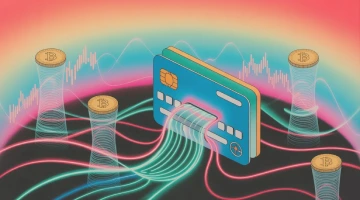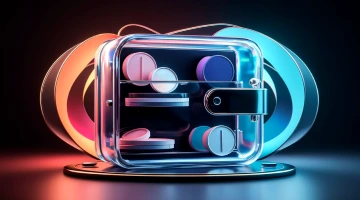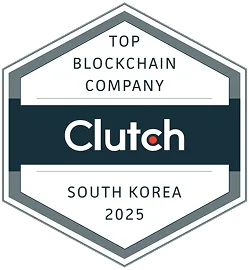What are DAOs in the Blockchain world?

We see the interest in DAO is very high up. Driven by Web3 idea, cryptocurrencies, and blockchain interoperability it is important to know what DAO is in actuality. This article will navigate you through all fundamentals of DAO, how it works and why you might need one in the future.
Decentralization matters
Every blockchain product, project, and protocol follows the basic principle of decentralization. Without decentralization, the concepts of DeFi protocols (decentralized finances), tokenized assets including NFTs, and blockchains wouldn’t make any sense.
Decentralization helps us to communicate with decentralized networks as blockchains independently and fairly, without any middleman or a centralized controller, that decides will your transaction be conducted successfully or not.
For concepts like DAO, decentralization is the key to their existence. The fundamental principle.
The other important aspect which helps DAO to be a truly decentralized organization is OpenSource. Open source code follows ideas of decentralization and helps to make the structure of a DAO transparent and trustworthy.
But what a DAO actually is?
What is DAO?
Well, the definition of DAO is a decentralized autonomous organization.
As how we mentioned earlier decentralization is the fundamental aspect of DAO.
But how can an organization be decentralized?
Every DAO is backed by a DAO smart-contract code, which declares the relationships between the members of the DAO and their ownership rights. To refresh your knowledge of smart contracts — we recommend you read this article.
It is important to understand, that DAO in its inherency is a smart-contract code that runs on a public blockchain like Ethereum network, Solana, NEAR blockchain, Chainlink, etc. So it becomes decentralized since DAOs smart contracts are deployed on a public blockchain. Simple.
Every DAO in its smart contract allows members to participate in a built-in model of organization for the collective management of funds, and assets, making decisions, voting for decisions and changes, and so on.
Everything for easy, transparent, and permissionless communication between DAOs members.
But what types of organizations DAO can be?
When it’s about DAO, it’s always about the people
It’s logical to assume, that if a certain group of people decides to create a DAO and consequently be members of that DAO they must be bound by the same ideas.
Or they are following the same goal, united by the same ideas, or bounded because of other common reasons.
Just to give some illustrated examples of what DAO can actually be:
- NFT artists DAO. Or even any other artist community that pursues monetizing their work. Over the past months, more and more NFT artist creators decided to create a DAO. Driven by a goal in a roadmap of their NFT project, artists and creators see a lot of potential in DAO.
- Freelancers DAO. A community-driven group of freelance workers can create their DAO to manage their funds, earnings, and contracts when they work in cooperation with each other.
- Venture Capital DAO. Especially, if that VC is empowered or backed by cryptocurrencies, or even built on digital assets as a whole. A VC DAO was one of the most popular DAO types to create.
- DeFi-driven DAO. A DAO that can be built by a group of crypto enthusiasts to pursue implementation of the innovative DeFi tools that they want to build. The most popular example is Olympus DAO. Or it can be a group of people that pursue a mass adoption of DeFi tools. Or decentralized tools as a whole (including the adoption of cryptocurrencies, DEXs, etc.)
- Local, or independent fund community DAO. A DAO that is built by people united by the same goal. For example, a DAO that incentivizes funds gathering for supporting mental health organizations and volunteers.
Even though, the buzz around DAO may seem very new and fresh the concept has been brought to life in 2016.
How the first DAO taught us a lesson for all future DAOs
Fairly saying, the concept of DAO has been inspired by a group of software developers in 2016, who were members of the Ethereum community. They were driven and inspired by the idea of decentralization in the creation of a solution for a cryptocurrency fund.
This first DAO was ironically called The DAO. And the goal of this DAO was to act as a VC (venture capital) with multiple member-owners. This concept was perfect for excluding any centralized authority (like a bank) to reduce costs, time for capital management, and in theory to improve the process of control by the investor’s funds.
The DAO was established and backed by a convoluted smart contract deployed on the Ethereum blockchain.
The main feature of that smart contract was the fund management feature that would allow companies to make proposals for funding to The DAO.
How did it work?
The DAO had curators at their disposal to manage these proposal-making processes across the whole DAO. The curators were prominent members of the Ethereum network and community at those times.
One of the DAO members would create a funding proposal that should be approved by curators. After such a proposal is approved (whitelisted) members of The DAO could participate in the vote.
Such a vote was possible for holders of the DAO tokens, i.e the investors of The DAO, that were eligible for a vote on decision-making proposals.
Such proposals should’ve received at least 20% of the quorum, before the number of funds in those proposals could be withdrawn to the whitelisted wallet addresses.
After a certain time, not that long after The DAO was created, the smart contract was exploited and The DAO was hacked due to the loop in that contact.
Well, pretty expectable, because the concept was a custom thing, so it was quite hard to foresee it.
The painful truth is, due to that loop in the smart contract, hackers have managed to steal around 3.6m of ETH which was equal to ~ $70 M at the time of June 2016.
That exploit was called the “recursive call” due to the hacker’s ability to address the smart contract of The DAO requesting to give back the Ether in the time gap before the balance could be even displayed.
Analyzing the possible reasons for this exploit, it was clear that in the very beginning of creating The DAO, the developers just couldn’t foresee this exploit. So they didn’t consider critical that bug of the smart contract when the token balance was displayed only after processing and sending the ETH amount to a different address.
Eventually, the creators of The DAO didn’t have sweet times after that, the following DAO token delisting from all CEXs (centralized exchanges) and the US SEC report saying that “According to the SEC, The DAO violated federal securities laws, along with all of its investors.”
What is important to understand here, is that the exploit could’ve been avoided. As in cases of hacker attacks in the blockchain space, the way to avoid exploits is the smart contract audit. Even though the bug was spotted by the advisors, the time was not on the side of The DAO.
Even though, with all the commotion around The DAO exploit, the original concept of DAO faced a lot of criticism before its broader adoption.
How DAO is operating? Is DAO the opposite of traditional organization?
The essential goal of every DAO — is to represent the company structure. This company structure could be anything, but it should be made by real people and coherently represent them as members and participants of a DAO.
Like every organization or company, DAO tends to operate with the help of rules and agreements. However, unlike traditional organizations, where all those rules and agreements were documented on paper and signed by a notary, DAO is using smart contracts instead.
In DAO we don’t sign papers but sign smart contracts. A core of DAO creators approves and establishes the rules of DAO through the automated execution of smart contracts.
The participants and members of DAO are permanently written in a smart contract code and mostly represented by wallet addresses. Every decision and movement within a DAO is represented by transactions on a blockchain where DAO smart contract was deployed.
Mostly, a DAO is operating either based on a token-driven membership model or a share-based model.
What does it mean?
In a token-based membership model, the core of a DAO like that is depending on its governance token. A DAO like this is entitled to issue these tokens and spread them among the participants. That DAO token can be listed on DEXs (decentralized exchange) and CEXs (centralized exchange) and be permissionless traded.
Participants of a DAO like this can earn those governance tokens through an active contribution within an organization, or by providing liquidity to the liquidity pools on DeFi platforms.
When someone wants to join a DAO and influence the activities in it, he or she needs to hold that governance token, and also be granted voting rights in that DAO.
On the other hand, share-based DAOs are operating with issuance and implication of proposals, like in the example of The DAO. The share-based membership model of DAO suits more for VC DAOs, or digital currency funds more because they tend to be a bit less permissionless and open because it makes sense for the fund’s management.
Every new participant or someone who wants to join a DAO like this goes through the procedure of submitting a proposal.
The shares of that DAO are represented by the worth of the total fund pool that every DAO member is in charge of. And the fraction of his voting power, which aims to be equal.
What about the differences with a traditional organization?
DAO is not a complete opposite of a traditional organization. At the end of the day, it’s a community, company, cooperative, or team.
The key differences between a traditional organization and a DAO lay in how they document their decisions, conduct the fund’s movements, and include or exclude the participants from their DAO.
The fundamental differences between DAO and traditional organization:
- DAO is fully transparent and public on the matter of what’s going on inside a company or an organization. The structure and capital are publicly visible to everyone.
- DAO doesn’t have a hierarchical structure. It shouldn’t have it, due to the DAOs democratic nature of an organization. All the decisions are taken through votes, which gives an immutable right to every participant to influence the activity, management, and path of DAO.
- DAO rules are fundamental and interchangeable for all DAOs participants.
- DAO is resistant to members’ manipulations. DAO rules and services are handled in a decentralized and automatic manner, they can’t be forged, changed back in time, or manipulated by one of the DAO members.
- DAO is mostly global, which means that DAO members are usually distributed around the globe, and they don’t have to run an office. At the same time, DAO can be a local community as well, when a traditional organization doesn’t have this flexibility.
What is the legal power of DAO?
Well, the legal power of a DAO is still under a ton of debate around it. Due to the nature of DAO, it is quite difficult to define or even “physically” see a DAO in an offline world, even though DAO is empowered to create a significant impact on that world.
The solution for DAO to create a legal power is to create a legal entity.
Quite often, the DAO members collectively decide to establish an LLC, or a non-profit organization if they want to have legal power in the offline world.
The decision for creating a legal entity is always left to the DAO members since there is no clear code of laws that can be applied to a DAO yet.
But for a lot of DAOs out there, it makes a lot of sense sometimes.
Most prominent DAOs in 2022
At the end of 2021 and the beginning of 2022, the demand for a DAO creation has risen as never before. More and more DAOs are about to come, but here are the most prominent DAOs at the moment:
- MakerDAO. A DAO on the Ethereum network, that aims to imply the adoption of a digital stablecoin currency DAI. The MakerDAO ecosystem offers Governance voting on changes in the Maker protocol and a variety of DeFi products that are made by the community.
The Maker Protocol allows users to issue DAI tokens by leveraging collateral assets approved by “Maker Governance.” - Curve DAO. Exists on an Ethereum blockchain. Initially is a part of CURVE Finance, a DEX and DeFi platform that allows users to exchange tokens for stablecoins through an Automated Market Maker (AMM)
read more about AMM here.
The Curve DAO token powers the Curve. Curve DAO participants (Curve DAO tokens) voting power in DAO is based on their share of locked Curve DAO tokens that they hold. The longer locked time of the Curve Token (CRV) grants the increase of participants voting power and their potential rewards from membership of Curve DAO. - Bankless DAO. A very strong community-driven DAO of crypto enthusiasts, NFT artists, and decentralization-inspired people. Bankless DAO follows the philosophy of removing a middleman between an asset and a transaction. Bankless DAO has a governance token BANK.
If you have BANK tokens it’s because you’ve participated in the bankless movement. Once you’ve claimed your BANK tokens it’s time to participate in the DAO. - Olympus DAO. Is a complicated DAO that combines a DeFi platform with staking and yield farming pools, issuing a governance token (OHM), and at the same time operates as a share-based DAO.
Some people may call it a Ponzi scheme. Olympus DAO is a complex structured DAO where decisions about the future of the project are made by a community using proposals. The main goal of the Olympus DAO is to imply a global stablecoin digital asset that is backed by The Olympus Treasury (cryptocurrencies assets) instead of USD. Unlike all other stablecoins are.
How you can build a DAO? Check if it makes sense for your project to build a DAO
Well, building a DAO starts with creating a community. A lot of DAOs tend to appear from blockchain-specific projects, or from an idea to deliver new crypto/blockchain ideas.
Building a DAO can be a long process if it is more community work. Technically speaking, the creation of a DAO isn’t difficult as long as there is no need for creating a new public blockchain, that would coincide with the DAO ideas or name (for example).
Since that, if you want to deploy your DAO smart contract on one of the known blockchains like Ethereum or Solana, then you should choose the membership model of your DAO.
Will, it be token-based or share-based DAO, and so on?
How is it to build a token-based DAO?
As we already mentioned before, the core of a DAO like that is its governance token and people.
Voting rights should be spread upfront by deploying a smart contract. Every token holder (i.e a DAO member) is given a certain fraction of voting rights in that DAO, mostly in an equal amount of a held governance token.
Since a DAO is issuing the governance tokens (that also can be called a funding process), the treasury of that DAO can be full quite quickly.
When a DAO treasury is full and the funding process is over, it’s time to freeze the agreements, rules, and the creation of a DAO event by deploying a smart contract on a blockchain.
A blockchain should be public and operate on one of the consensus mechanisms, except the Proof of Authority (that is used for private blockchain networks).
After that, when a core DAO smart contract is deployed on a blockchain, there is no return for any changes in the DAO core structure. Any change can be implicated only through a voting mechanism since then.
Since that, a DAO is completely autonomous and decentralized and no entitled authority is eligible to forcingly manipulate the DAOs rules, funds, and decisions in it. All those actions only can be possibly made by the members of that DAO.
Congrats, the DAO is active!
Some examples of why it makes sense to create a DAO for you:
- You have a big community that is driven by the same idea, and they all value the principles of blockchain and decentralization.
- You have a big NFT Community and NFT project, P2E, PFP, and an NFT game. And you’re planning to develop your project even further with the help of contributors, and other valuable people.
- You are having a crypto-based venture capital, or you’re a group of independent crypto investors that are aiming to fund innovative blockchain projects.
- You’re ready for Web3 adoption and you want to unite your decentralized-driven community into one DAO
- You’re having a DeFi project that needs a lot of regulation in the Web3 world by its users, liquidity providers, etc.
- You just feel that something like DAO makes a lot of sense to create for you
We take the building of a DAO to the right path
Rock’n’Block’s team can help you with:
⚡️NFT and NFT Marketplaces development ;
⚡️NFT 10K generator;
⚡️Staking platforms;
⚡️Vesting platforms;
⚡️Farming platforms;
⚡️Crowdsale;
⚡️Crosschain bridge;
⚡️Any other custom request from a crypto wallet development to custom blockchain development.
If you’re interested in building your blockchain project, feel free to contact our team via the Telegram channel or book a call via Calendly.
We❤️Development
Rock⚡️Block
Follow us on social media to receive the hottest blockchain development Rock’n’Block updates Twitter, Telegram, LinkedIn, Facebook, Instagram













%201.webp)



